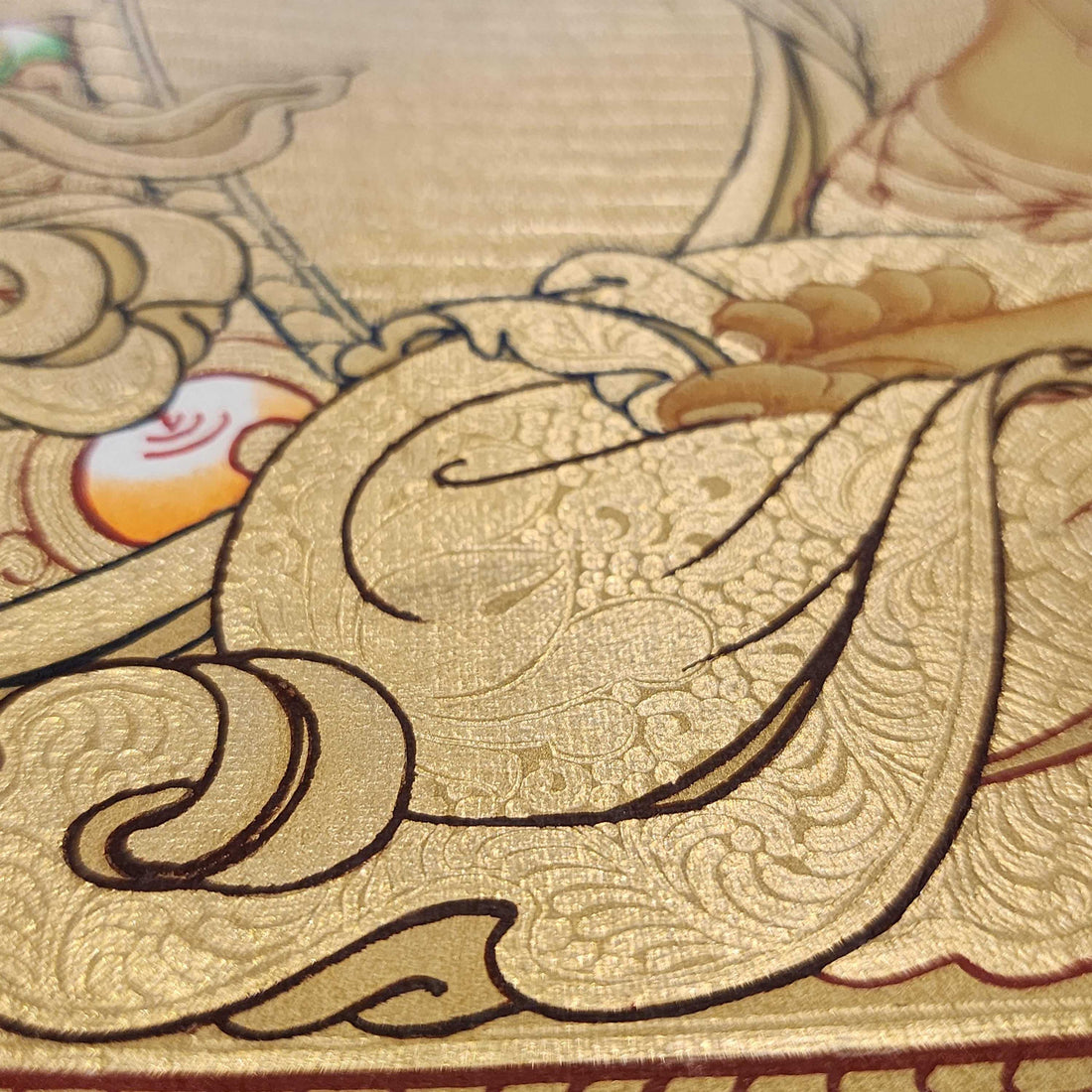
The Symbolism of the Dharma Wheel in Thangka Art
Share
The Dharma Wheel, or Dharmachakra, is one of the most ancient and significant symbols in Buddhism. In Thangka art, it represents the Buddha’s teachings and the path to liberation.
Meaning of the Dharma Wheel
— Dharmachakra translates as “Wheel of the Law.”
— It symbolizes the Buddha’s first teaching after enlightenment, known as the “Turning of the Wheel of Dharma.”
Structure and Symbolism
— The Hub: Represents moral discipline, the center of spiritual practice.
— The Spokes (usually 8): Symbolize the Noble Eightfold Path—right view, thought, speech, action, livelihood, effort, mindfulness, and concentration.
— The Rim: Represents concentration and mindfulness, holding everything together.
Colors of the Dharma Wheel
— Golden wheels represent ultimate perfection and enlightenment.
— Brightly painted wheels in Thangkas symbolize universal truth spreading across the world.
The Dharma Wheel in Deity Imagery
— Often depicted with Buddhas or bodhisattvas as part of their thrones or surrounding symbols.
— Associated with deities like Manjushri, who embodies wisdom.
Spiritual Significance
— Reminds practitioners of the Buddha’s teachings.
— Encourages the continuous “turning” of wisdom in daily life and meditation.
Conclusion
In Thangka art, the Dharma Wheel is a powerful reminder of the Buddha’s path. Its symbolism guides practitioners toward wisdom, discipline, and ultimate liberation.
